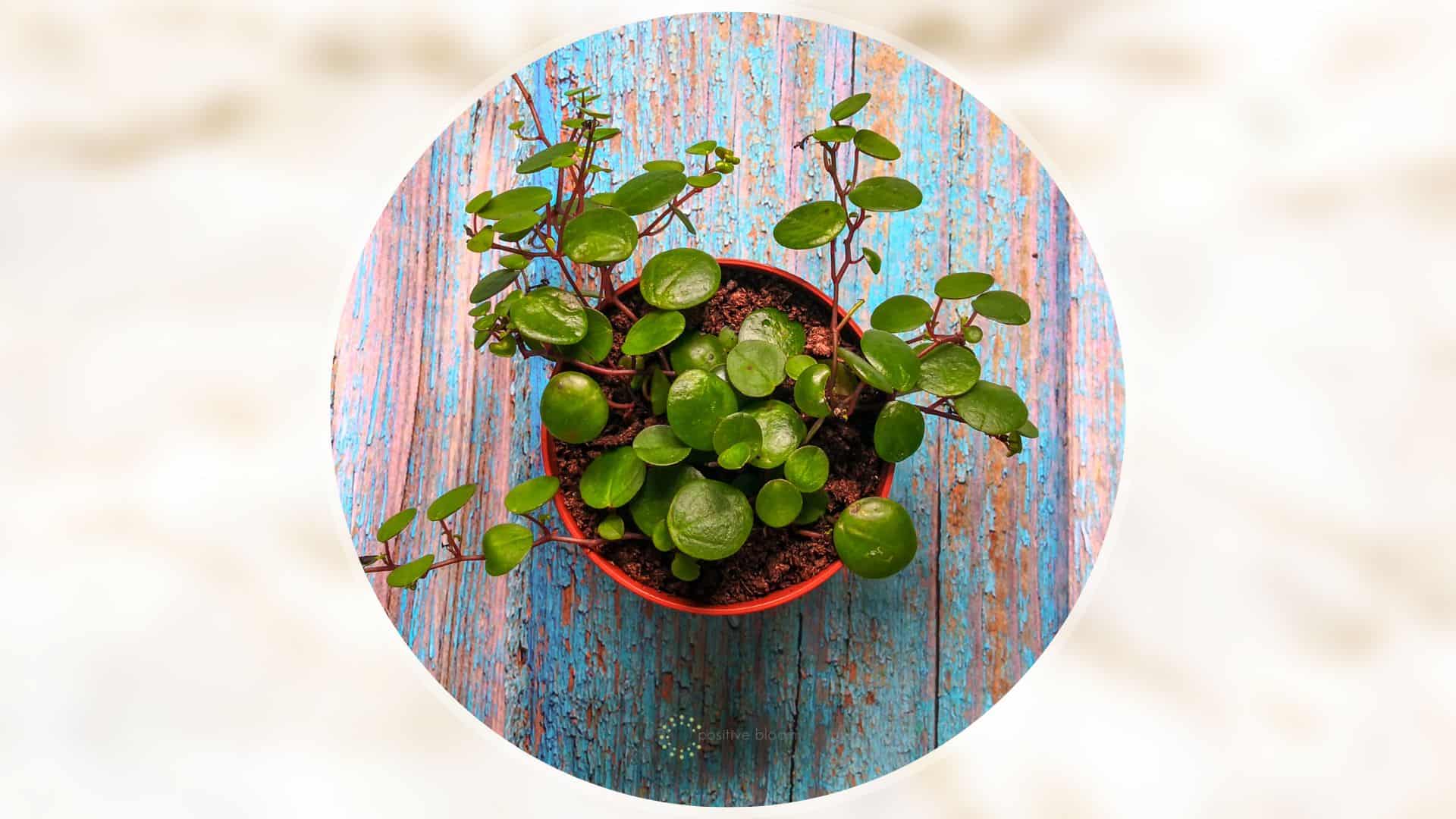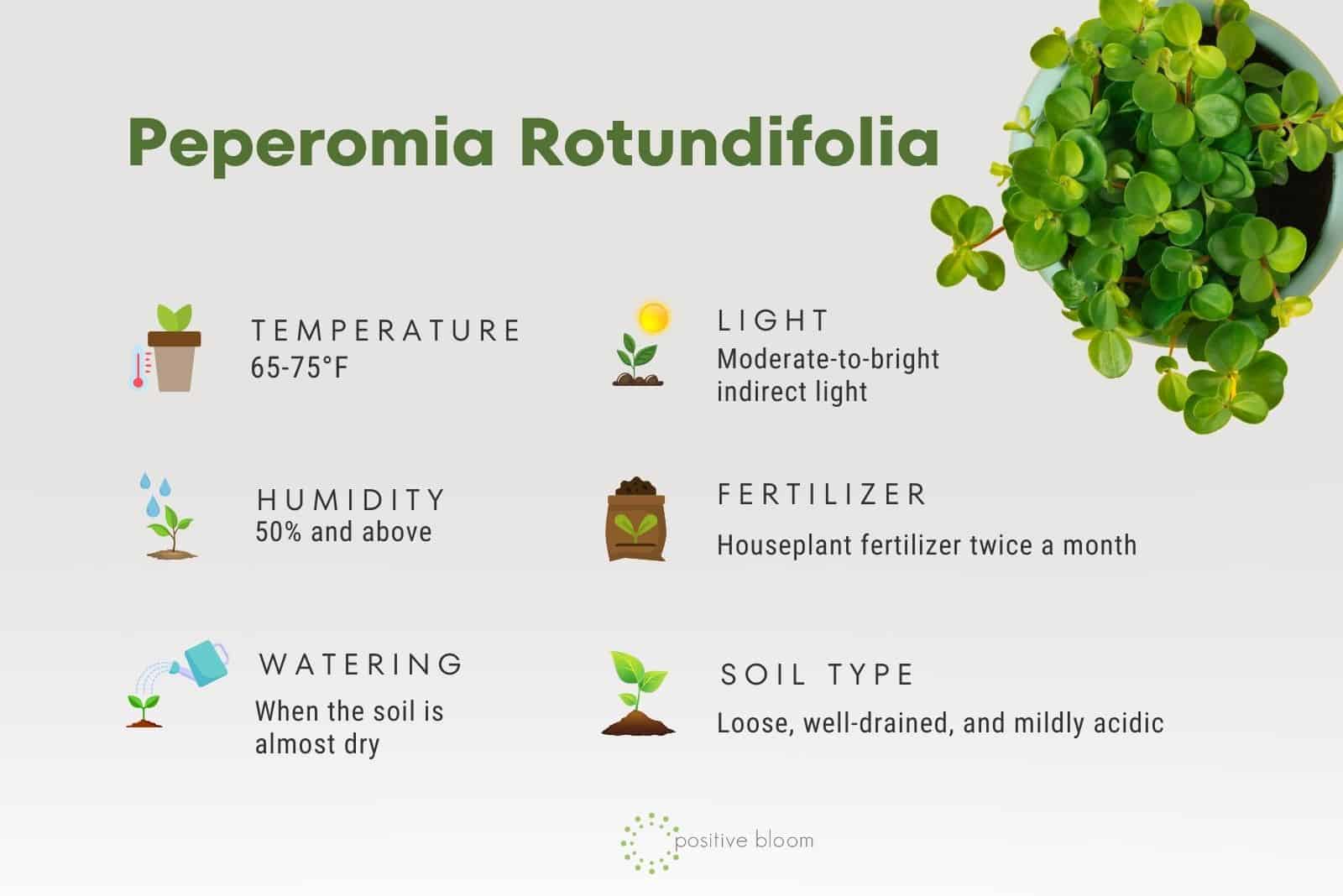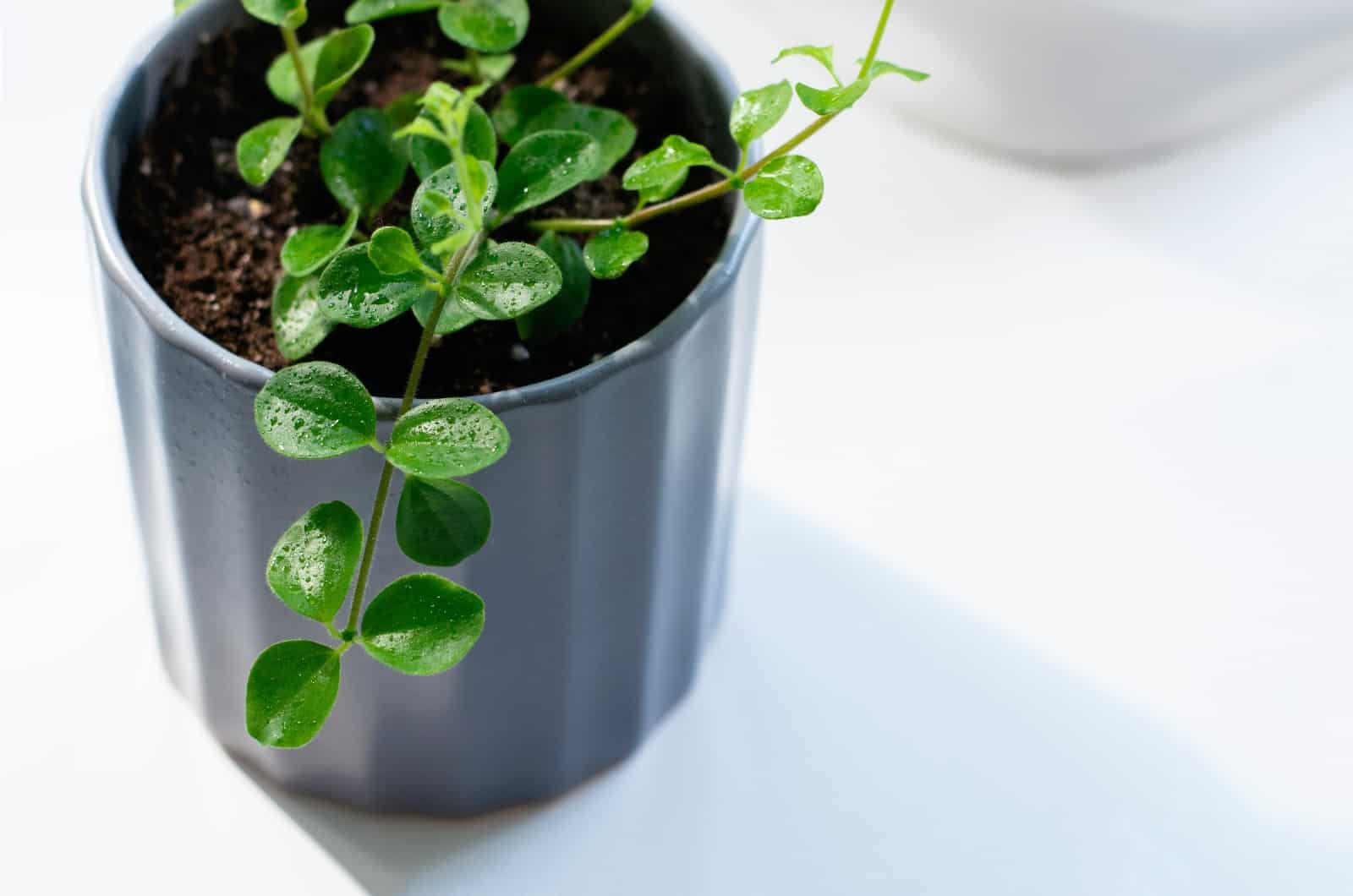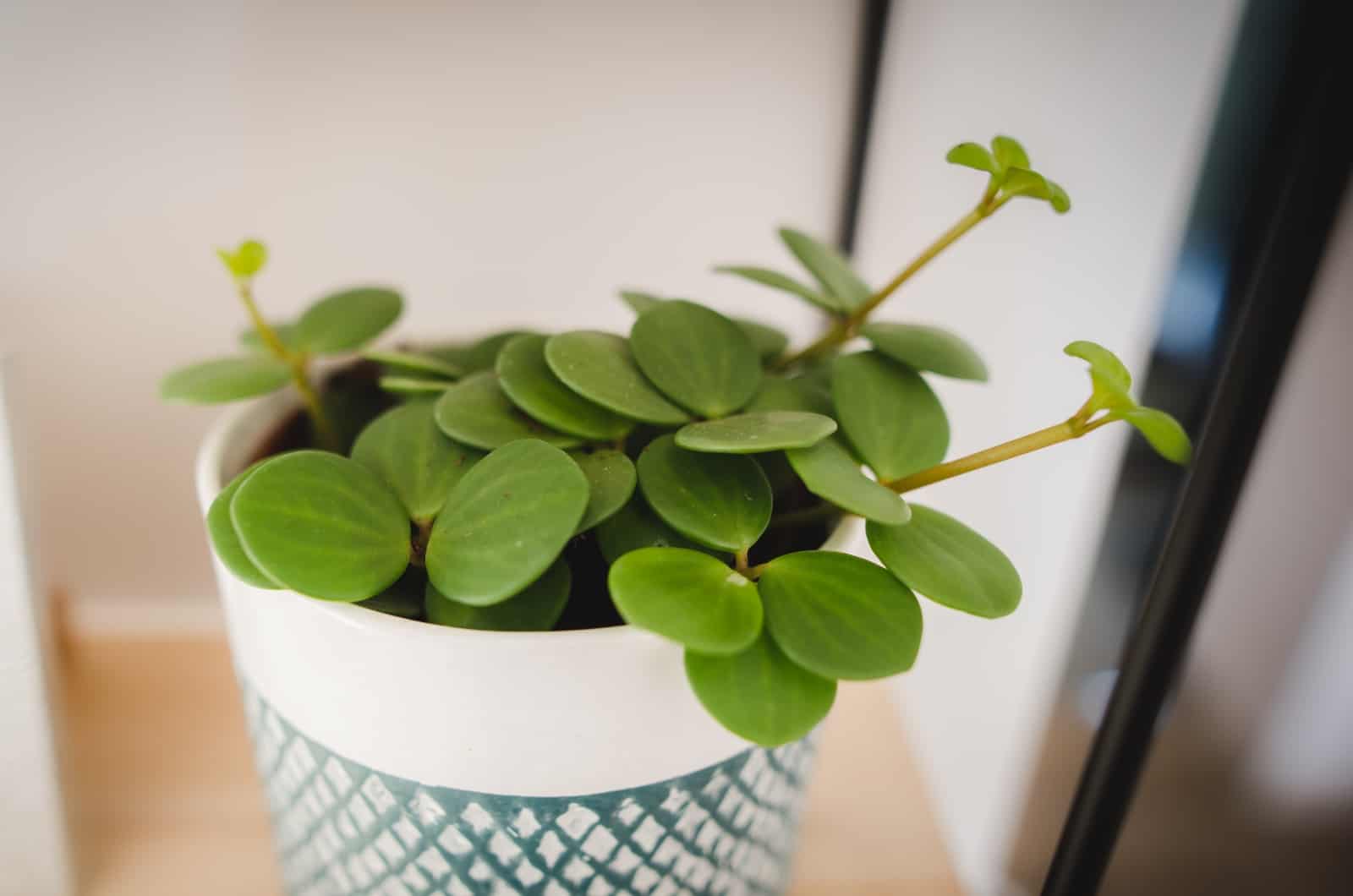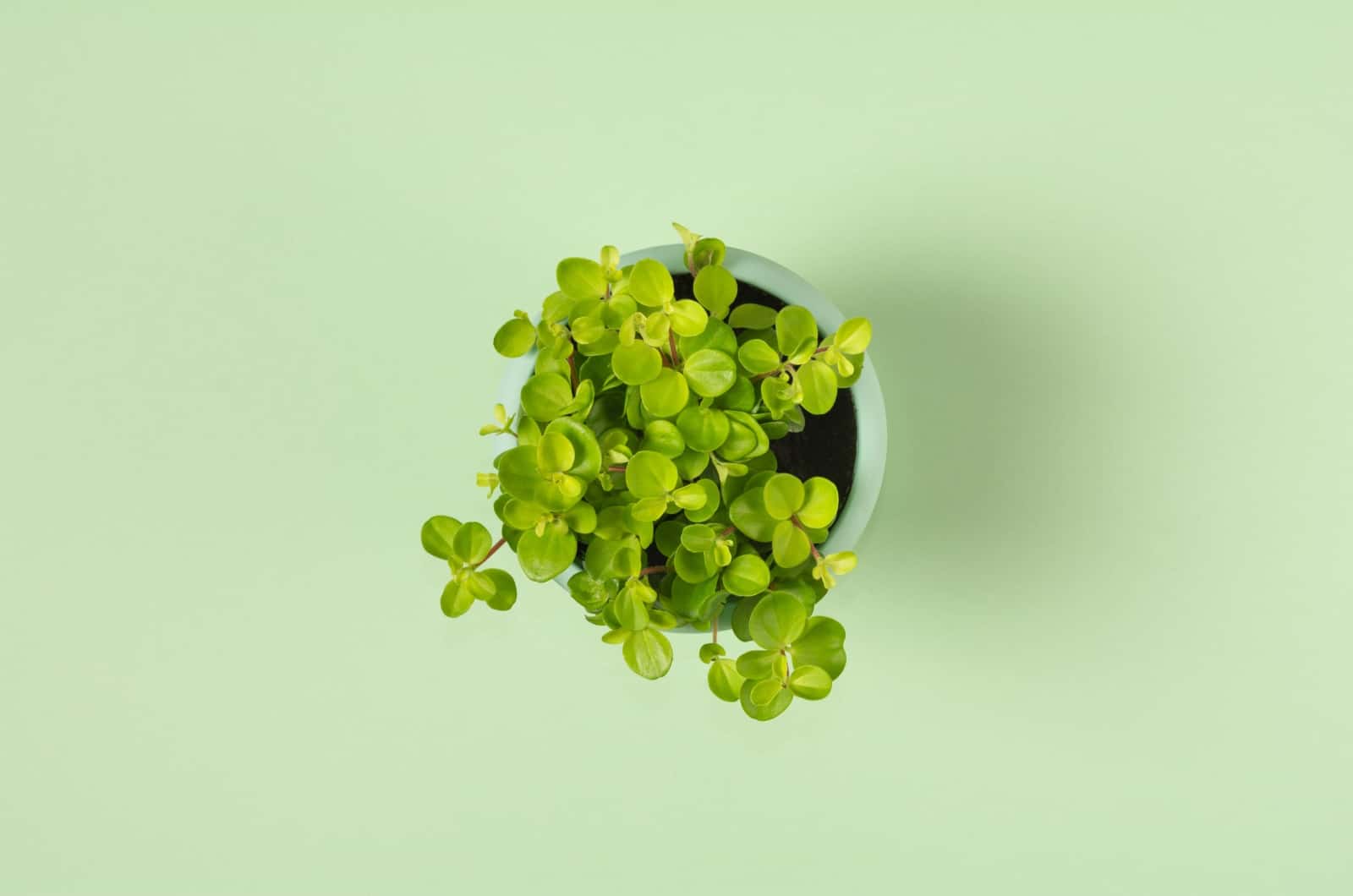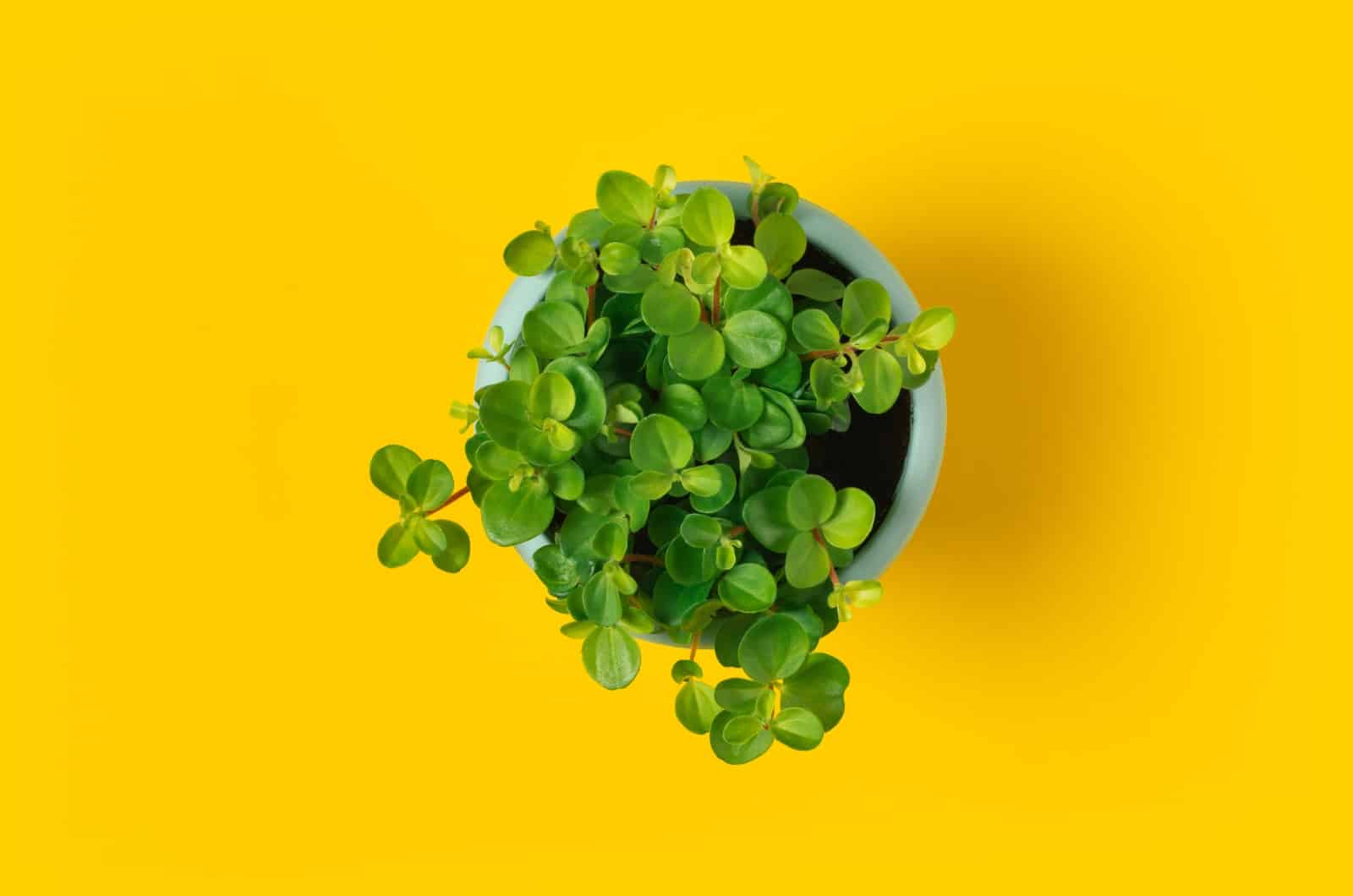Peperomias (also known as radiator plants) are popular houseplants that almost every true gardener has in their collection.
There are many (and I mean many) varieties in this genus, so it’s not surprising that it might be a bit difficult for us to choose which one to get, especially if it’s our first one.
Well, getting a Peperomia rotundifolia is an excellent choice for starting your radiator plant collection as it’s perfect for regular planters and hanging baskets, has deep, lush, succulent like foliage, and trails to die for.
It doesn’t require too much care, but you still need to ensure it gets all it needs to thrive and remain healthy.
And just like all plants, this one is also at risk of getting infested with pests or afflicted by certain diseases, which is all the more reason to tend to your green buddy.
But don’t worry; we will explore all the things you need to know about caring for it the best way so that you can keep it healthy and issue-free.
Now, let’s learn something more about it before continuing with the care guide:
[table id=649 /]
Peperomia Rotundifolia Plant Care
The general peperomia plant care guide suggests that these plants require bright light and well-draining substrates to thrive, as well as warm temperatures, a bit of water now and then, and higher humidity levels (everything your P. rotundifolia needs).
Some additional requirements include repotting (as pot bound plants cannot flourish), pruning, and occasional fertilization.
We’ll also tackle some simple propagation methods for the jade necklace peperomia so that you can multiply it and decorate your home, or gift them to your loved ones.
Let’s get started!
Light Requirements
The trailing jade requires moderate-to-bright indirect light to thrive, and you can achieve this by placing it on an east or south-facing windowsill.
This plant can also tolerate some shade, so you can place it a couple of feet away from your windows if you like it better in that location.
But whatever you do, don’t expose it to too much direct sunlight since it’s too harsh and can damage its purely green leaves.
(Eastern and southern windows do get some direct sun, but it’s quite mild and cannot hurt your trailing jade.)
Water And Humidity
The jade necklace doesn’t require too much moisture as it stores a fair bit in its succulent-like foliage.
Therefore, you should only irrigate this plant when its potting medium is almost dry in order to avoid overwatering and root rot.
(It is always better to underwater than overwater your plants since it doesn’t cause as much damage!)
Of course, you’ll have to water your round leaf peperomia more frequently during its growing season and in warm weather since the plant uses more moisture and it evaporates more quickly.
On the other hand, you’ll irrigate less frequently in winter and during the dormancy period, so always be extra careful when watering so as to avoid overwatering and root rot.
Finally, use distilled or rainwater since they don’t contain chlorine and fluorides, which can build up in your plant and prevent regular moisture and nutrient uptake.
You can use tap water, but leave it out overnight for the chlorine to evaporate.
Humidity
The Jade necklace’s humidity requirements are virtually the same as those we find in the Peperomia serpens care guide, which is its close relative.
It thrives when the air moisture levels are 50% and above, although it can get used to humidity of 40% given time.
If you need to raise your indoor air moisture levels, we suggest using a cool mist humidifier since it’s the best option.
You can also mist your plant’s foliage occasionally, just make sure the leaves aren’t constantly wet because that can lead to fungal infections. (Spray them in the morning to avoid diseases.)
Temperature
The perfect temperatures for the trailing jade plant are between 65 and 75 degrees Fahrenheit.
Of course, they can tolerate some cooler conditions, but you should generally keep the temperatures above 50 degrees Fahrenheit so that your plant doesn’t fall into a state of shock.
You should also keep it away from air conditioners, heaters, drafty windows and doors, hallways, and similar locations since they experience temperature changes and dry air, which can stress out your plant.
Soil And Fertilizer
The best soil for the round leaf plant is loose and well-draining. You can achieve this by mixing 2 parts coconut coir (or peat moss) and one part perlite, pumice, or horticultural sand.
And if you want to make your growing medium more fertile, you can always add some worm castings into the mixture.
Furthermore, the pH level of the soil should be around 6.0 to ensure optimal absorption of moisture and minerals from the growing substrate.
But if you’re not a fan of making your own potting mix, or you don’t have the time, you can always go to your local garden center and get high-quality, well-draining potting soil.
Fertilizer
You can use a regular houseplant fertilizer for your jade necklace plant if you want to boost its growth.
Many growers prefer liquid fertilizers for potted plants as they can dilute them to the desired strength to prevent fertilizer burn.
If you’re using a water-soluble variety, dilute it to at least half-strength (or more if indicated in the instructions) and feed your Peperomia rotundifolia twice a month during its growing season (starting in early spring, once you notice new growth appearing).
You shouldn’t feed this plant in winter, but if you do, highly reduce the frequency since that’s when the plant is dormant and has no use for so many nutrients.
Repotting
When we examine the care guide for the peperomia frost, we notice a similarity in all aspects of plant care, including repotting.
With that in mind, we can conclude that our trailing peperomia only needs to be moved to a larger container when it has overgrown its current container, if you notice its roots peeking through the drainage holes, or its pot bound.
Luckily, this doesn’t happen that often, so you’ll have to repot the jade necklace once every 2-3 years.
When this happens, find a planter 1-2 sizes larger than the previous one and with at least one drainage hole to prevent waterlogging.
We prefer using terracotta pots since they ensure optimal drainage, but other materials aren’t that bad if you have a quick-draining substrate.
When repotting, take your peperomia out of its current planter and disentangle its roots if it’s pot bound. Then take some growing medium and place it in the bottom of the container, put your trailing jade in it, and cover its root system with more soil mix.
Water your newly repotted trailing peperomia until you notice the moisture draining out through the holes, and then take it back to its usual position once the excess seeps out.
Pruning
This trailing peperomia requires regular pruning to prevent it from looking leggy and shaggy.
Take your gardening scissors and remove excessively long stems or any that you don’t like.
Regular trimming of the stems and foliage can keep your plant in place and maintain its health, not to mention its improved beauty once you remove those old, diseased, and discolored leaves.
Propagation
There are many stunning peperomia types that can go nicely with your P. rotundifolia, and one of the easiest ways to propagate them, including this trailing plant, is by stem or leaf cuttings.
You can reproduce the stems of this plant either in water or a soil-based medium, and we’ll discuss both methods so that you can choose between them.
We’ll also mention how to propagate this plant from its tiny green leaves so that you don’t throw anything away.
Soil Propagation
Step 1. Cut a healthy stem that has many leaves and nodes off your peperomia.
Step 2. Find the place where the bottom leaves connect and remove those leaves so that the new plant can grow roots from the nodes.
Step 3. Plant the cutting into the mixture, ensuring that the nodes are in the potting soil so that they can root.
Step 4. Expose your cuttings to bright light, water them whenever the soil begins to dry, and put a plastic bag or humidity cover over them to maintain high air moisture levels and promote faster rooting.
Water Propagation
Step 1. Take a healthy cutting with plenty of leaves and nodes.
Step 2. Remove the connecting bottom foliage so that the roots can develop from the nodes.
Step 3. Place the cuttings in a glass vessel with water, making sure that the nodes are submerged.
Step 4. Put the jar in a location with bright light and high humidity to support the rooting process.
Step 5. Change the water every 2-3 days or whenever it gets murky.
Step 6. Once the root system develops and grows in size, you can transplant your new peperomia to the traditional potting mix.
Leaf Cutting Propagation
Once you plant the stems, don’t throw away the tiny leaves. You can stick their bottom parts in water and expose them to indirect sunlight so that the root system can develop.
Once you notice the roots, you can repot the leaves into nursery pots and then continue repotting them as the plant keeps overgrowing its containers.
Common Issues With The Trailing Jade Plant
This plant with round leaves can suffer from some common houseplant problems such as pest infestations and diseases.
However, you can avoid these issues (and many others) by caring for it and meeting its requirements, especially those concerning watering and lighting.
Pests
The usual houseplant pests can appear on your jade necklace, so it’s not uncommon to have to deal with aphids, mealybugs, scales, spider mites, thrips, whiteflies, etc.
These nuisances usually colonize weak plants, which is why it’s so important to properly care for your Peperomia rotundifolia, Peperomia abricos, or any other variety.
And if you do end up with an infestation, you can control it with neem oil, similar natural insecticides, or synthetic pesticides.
Diseases
Root rot is probably the most common disease that can affect houseplants, and the same goes for the round leaf peperomia.
We sometimes don’t realize that our plants don’t actually need that much water, so we keep pouring more and more when our plant is already hydrated. When we overwater our plants, their roots don’t get enough oxygen and start to rot.
They become unable to perform their function of absorbing moisture and minerals, which is why we notice yellow discolorations, stunted growth, wilting, and a funky smell in plants infected with root rot.
When you notice these signs, immediately check the roots of your plant and remove any mushy and dark ones since they’ve started to rot.
Then you can spray some broad-spectrum fungicide to ensure that the disease doesn’t return too soon, and plant your peperomia in fresh, quick-draining soil and a planter with drainage holes.
FAQ
Is the trailing jade plant toxic?
All peperomia plants are non-toxic to humans, cats, and dogs, including this one.
Therefore, you can place it wherever you like (as long as it gets enough sunlight) without worrying about whether your children or pets will nibble on its tiny leaves.
Are Peperomia rotundifolia plants good for beginners?
This low-maintenance plant is perfect for beginners as it doesn’t require extensive pruning or watering. Plant it in a well-draining potting soil, add some fertilizer from time to time, and it will thrive.
It can even adjust to average household humidity, so you don’t have to buy a humidifier or mist it constantly.
It also resembles the string of turtles aka Peperomia prostrata, and growing them next to each other can be a great decoration for your home.
How do you revive a dying Peperomia rotundifolia?
One of the most common causes of a dying trailing jade is overwatering and root rot, and in this case, you need to cut the damaged roots, repot your plant into fresh growing medium, and water it only when the potting mix is almost dry.
Other causes of a dying round leaf plant are inadequate fertilization or lighting, and in these cases you need to trace back your steps and see what you’ve been doing wrong.
For instance, yellow leaves can indicate lack of nitrogen, sunlight, or too much light, so examine your location, remember the last time you fertilized it, and then either move it to a brighter location, a shadier one, or feed it.
The key thing is to exhaust all the possible reasons for a dying peperomia, and only then do something to save it in order not to cause more trouble.
Final Thoughts
The Peperomia rotundifolia is an amazing plant suitable for beginners and experts alike due to its easy care, gorgeous trailing stems, and tiny green leaves.
All it requires is high humidity, bright light, well-draining potting soil, and water once its growing medium is almost dry.
You should repot it every couple of years, prune the unwanted stems, and fertilize it approximately every other week to support its healthy growth.
And if something unexpected happens, such as a pest attack or an infection, you can find out how to deal with them in the paragraphs above.
We hope you enjoy this plant!
Until next time!

